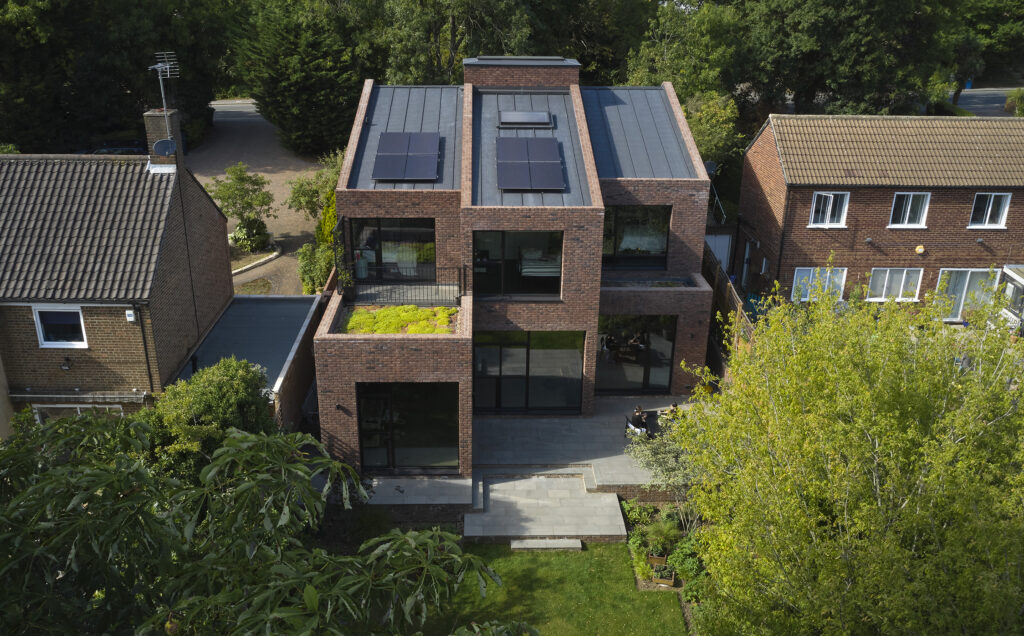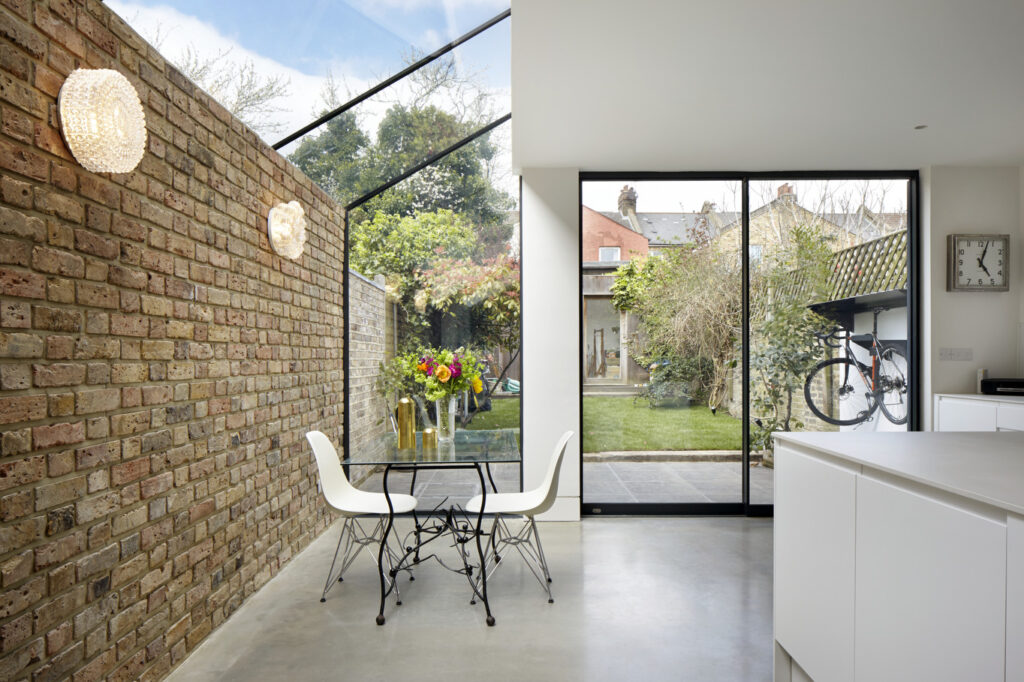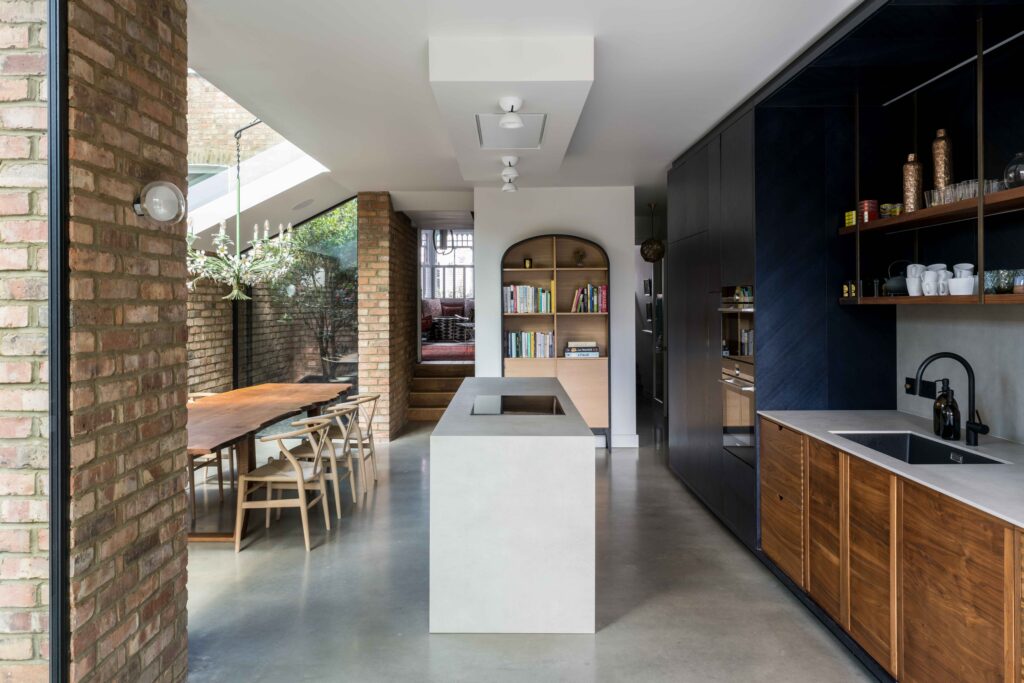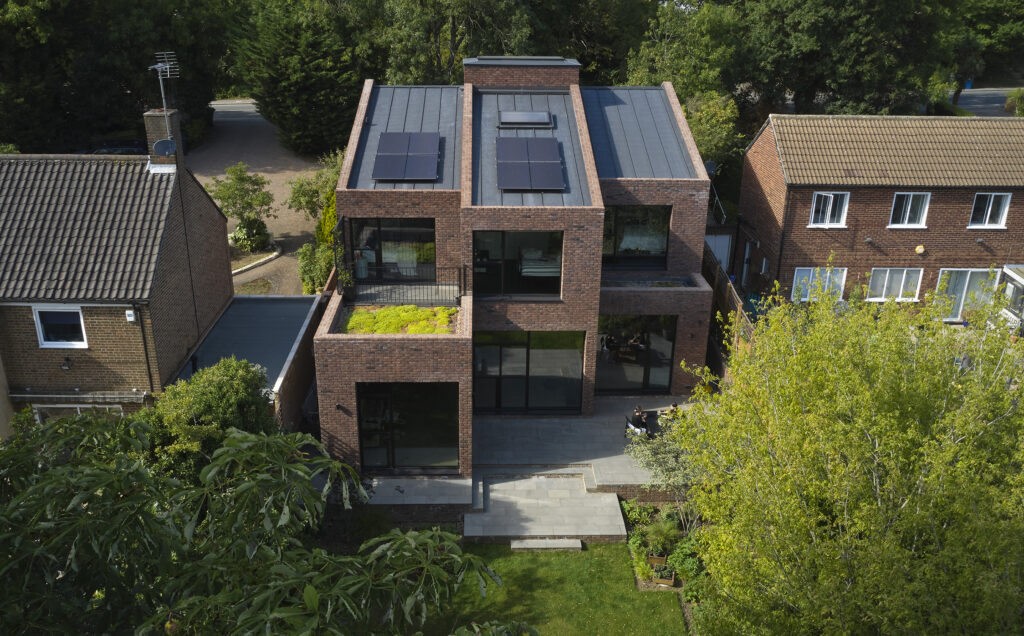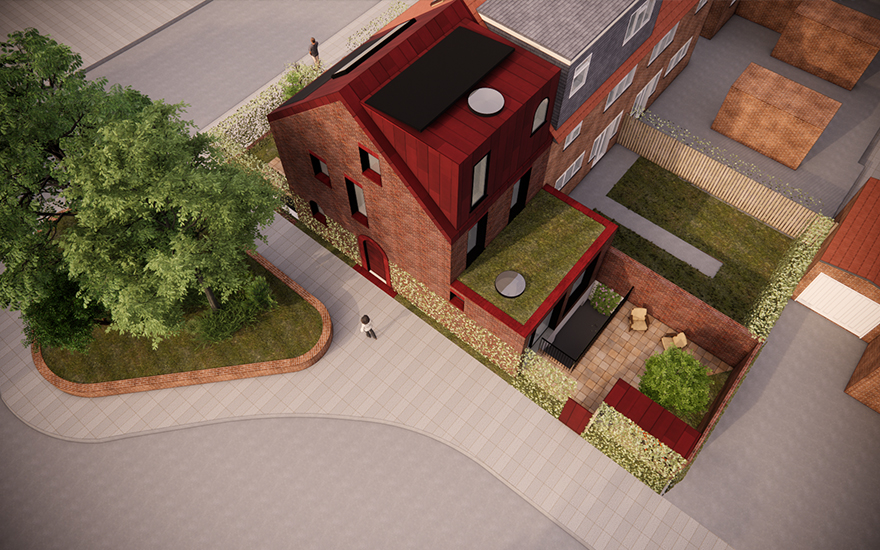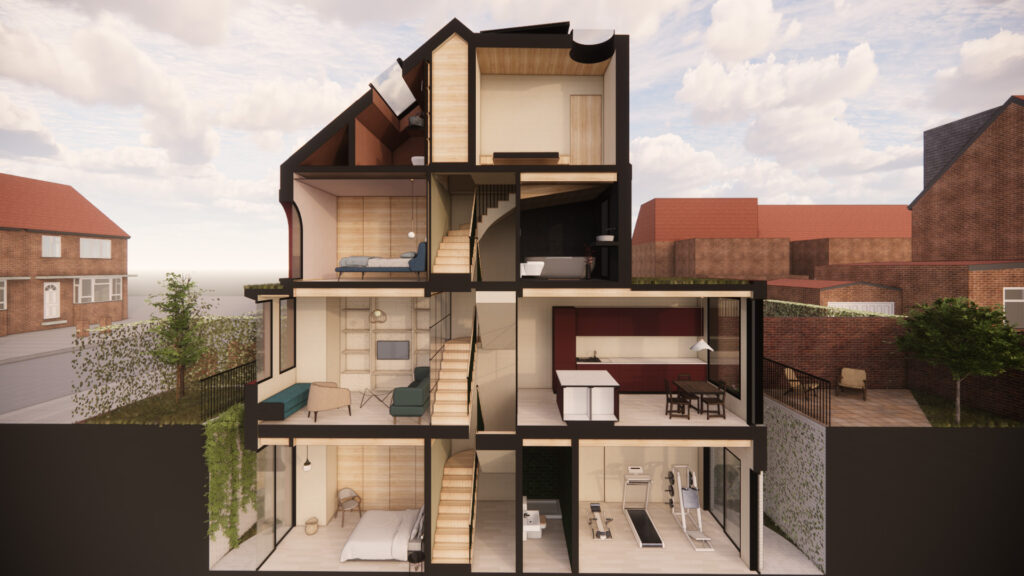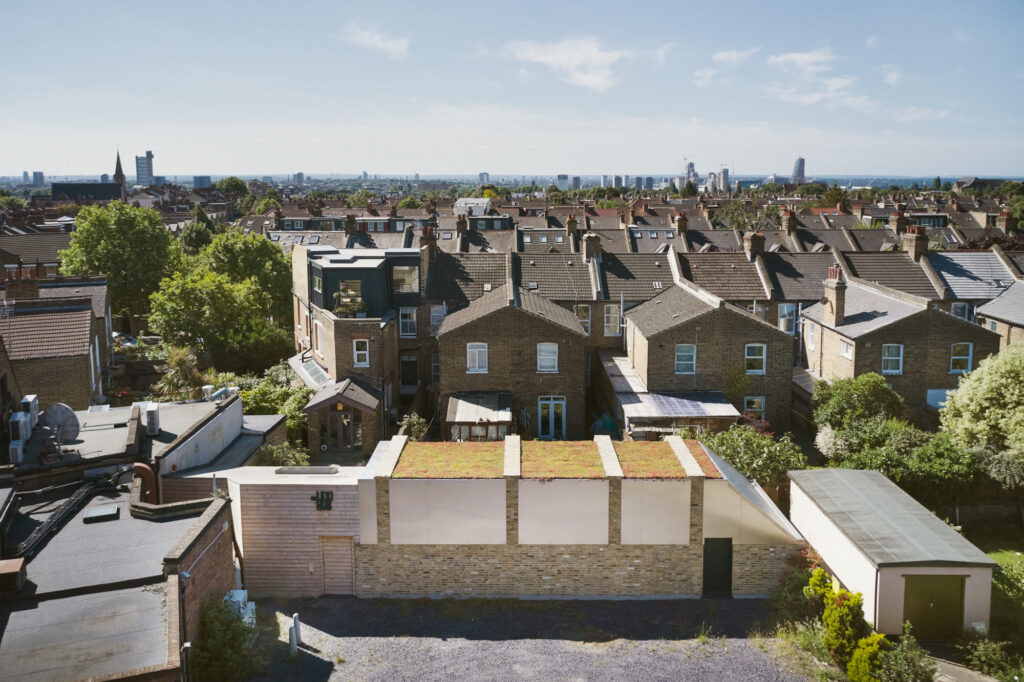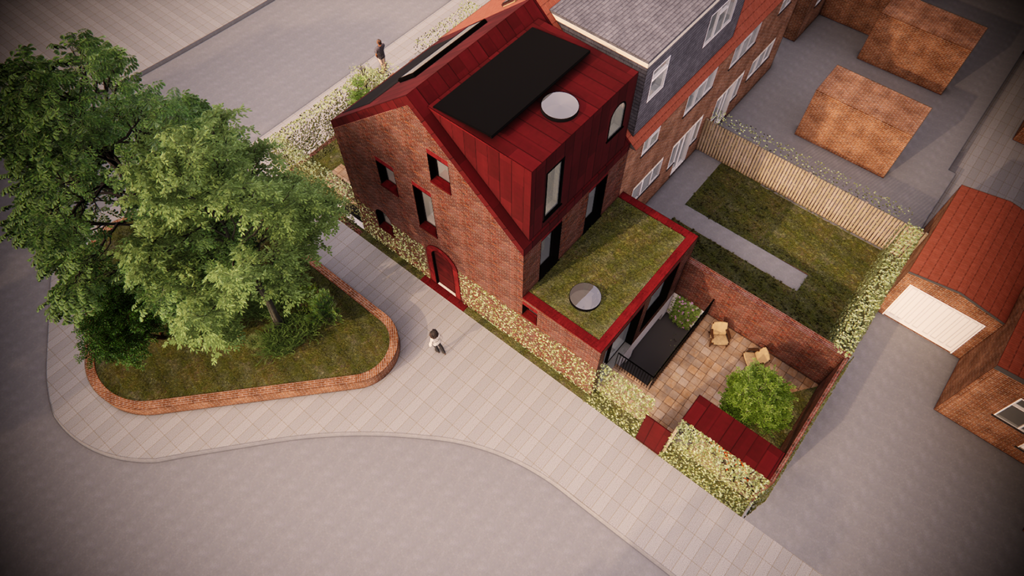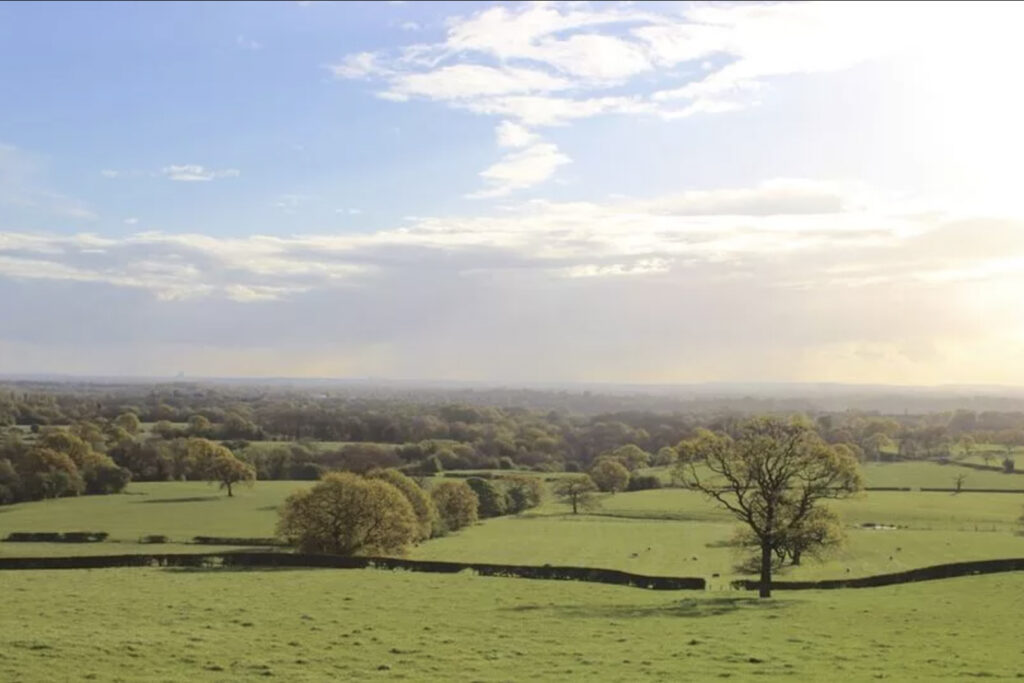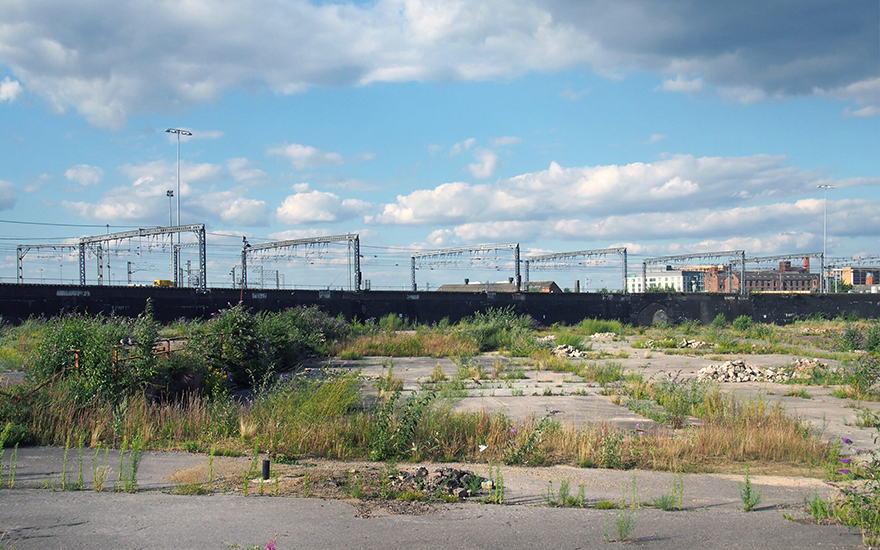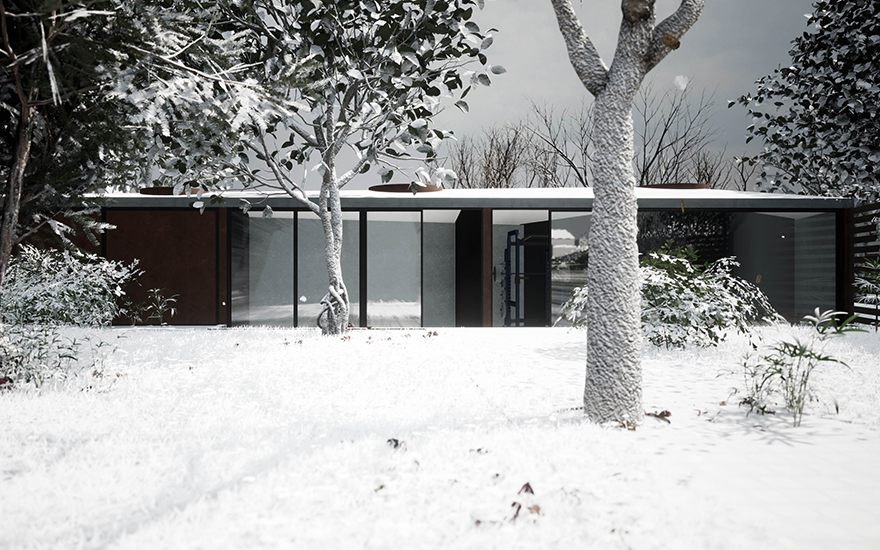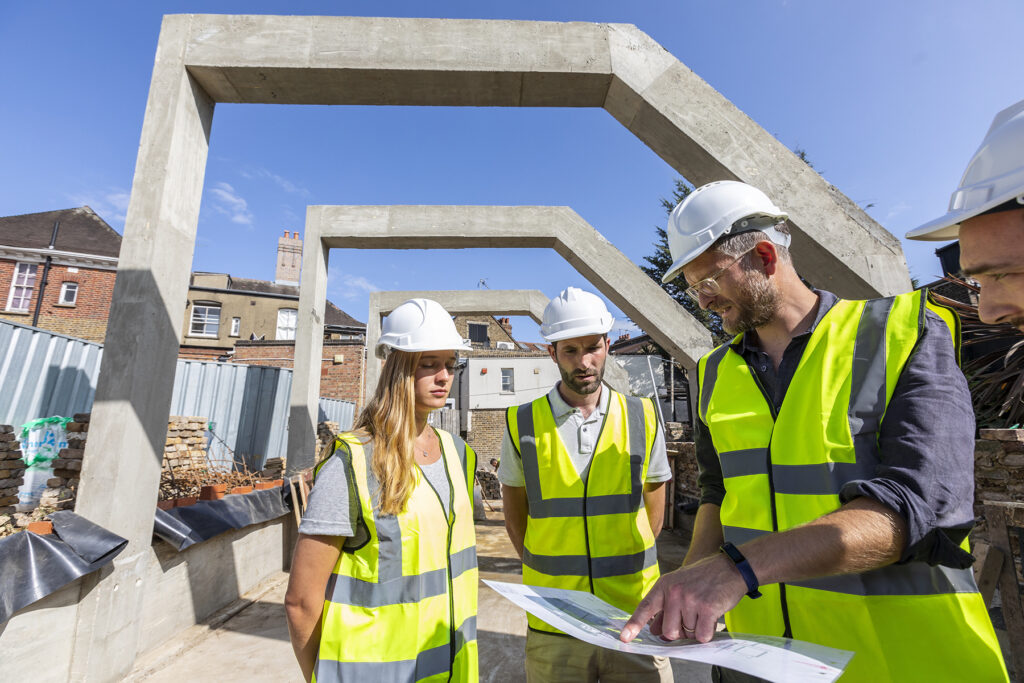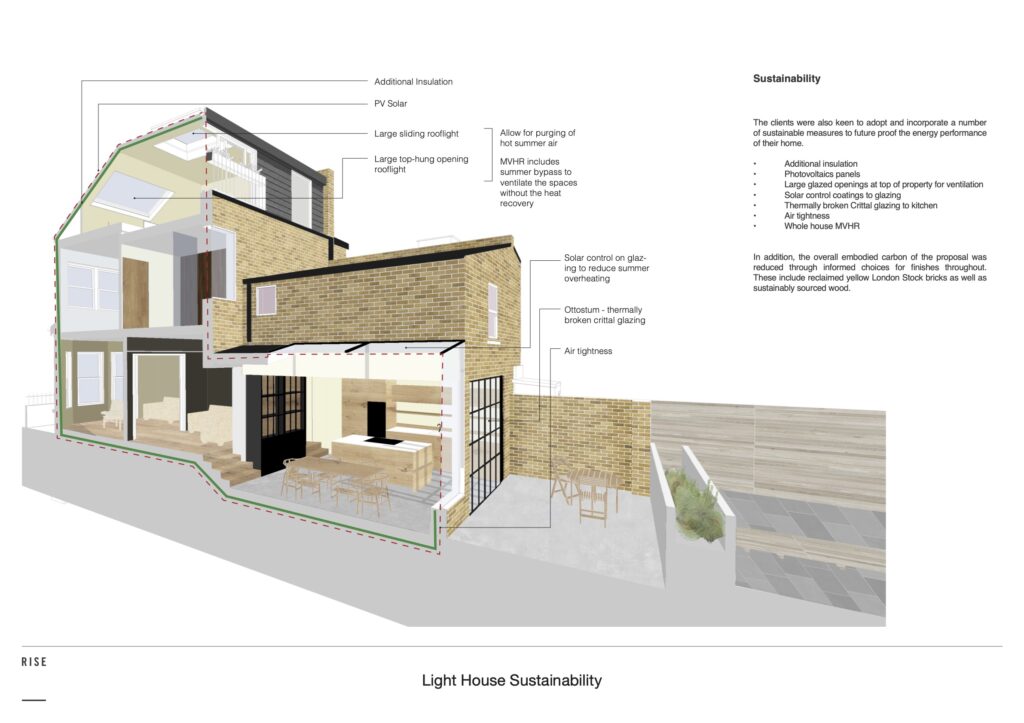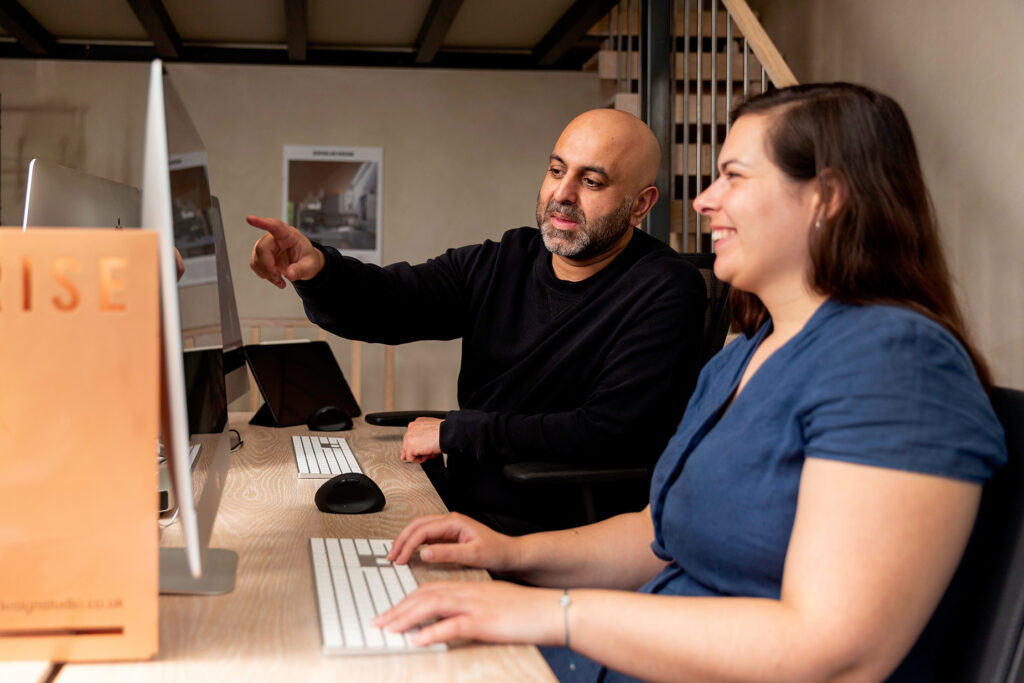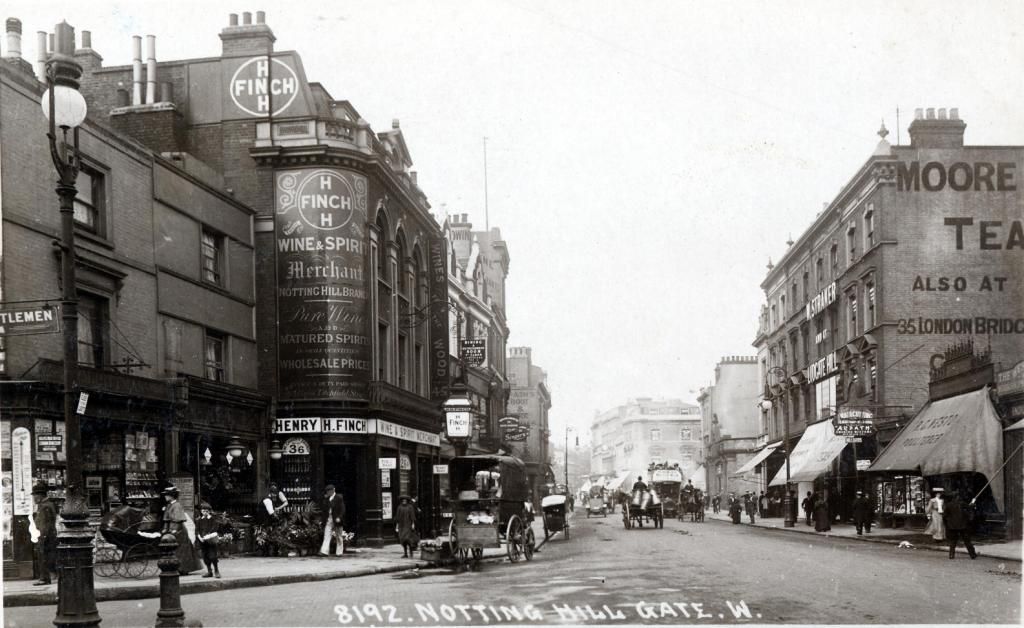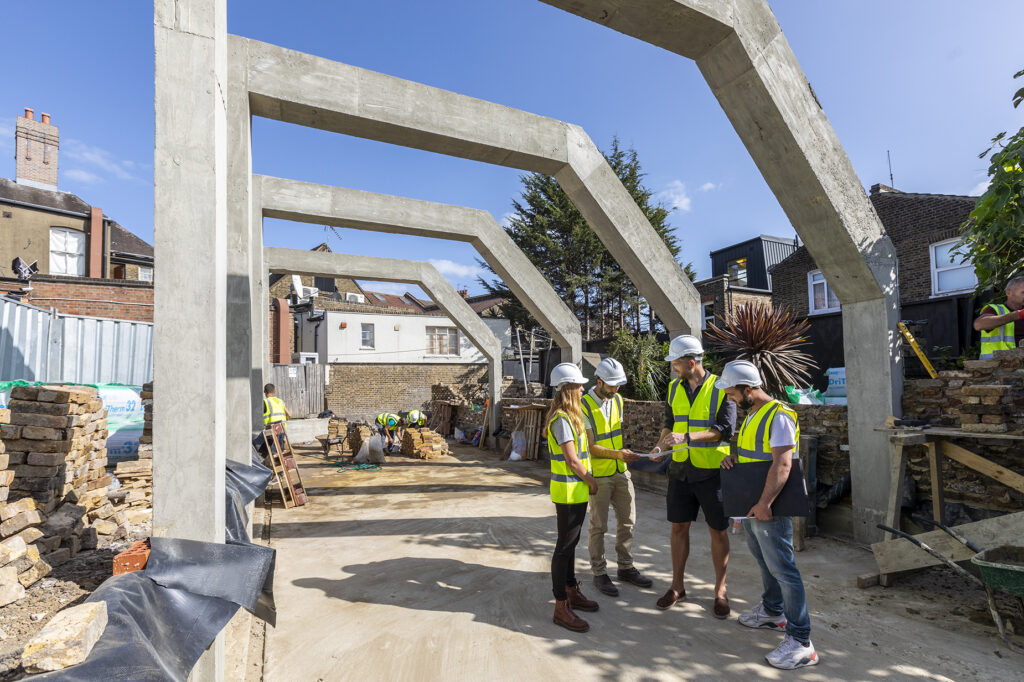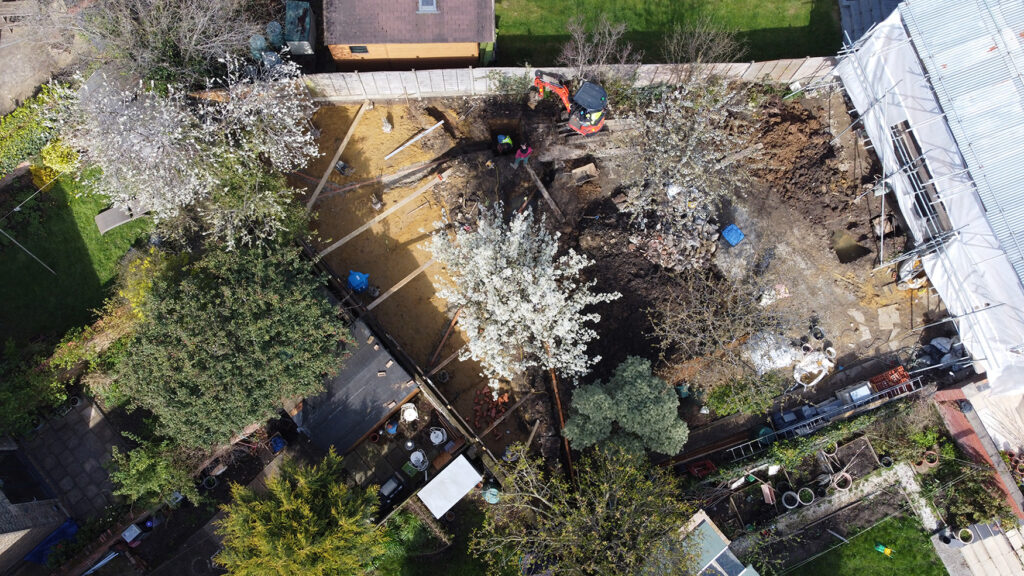At our small contemporary design-led architecture studio, we are deeply committed to creating low energy and low embodied carbon designs that not only address the housing demand but also prioritise environmental responsibility. In this blog, we will delve into the world of backland development, exploring the challenges, opportunities, and the smart approaches to obtaining planning permission for building in your garden.
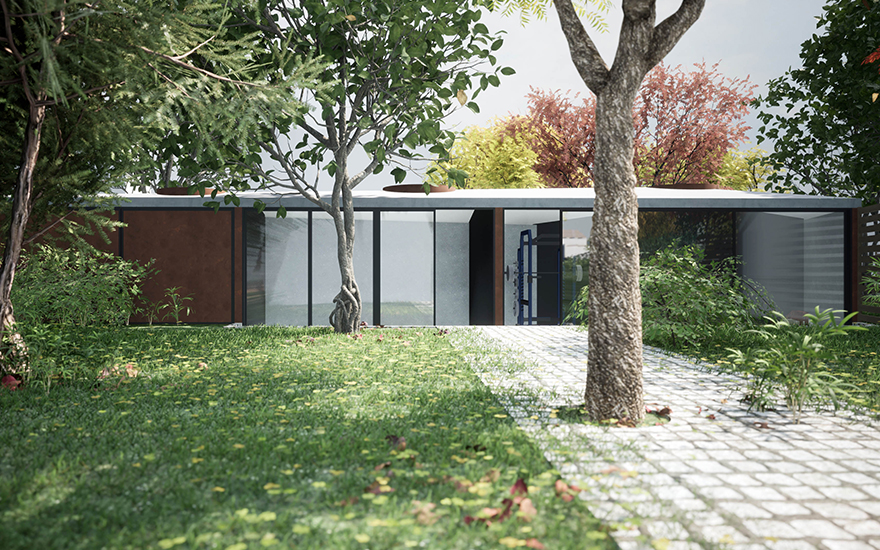
Section 1: Understanding Backland Development
1.1 Defining Backland Development
Backland development refers to the utilisation of land that is not immediately visible from main roadways. These sites typically exist behind existing properties, often forming sections of a garden or small plots of land between buildings. The key characteristic of backland development is the availability of good road access from the rear or side of a property.
1.2 Shifting Policies and Housing Needs
In response to the ongoing population growth and the demand for more homes, local planning policies across the UK are encouraging the intensification of development in already built-up areas. This approach aims to make use of well-connected sites near transportation resources, commercial clusters, and social services. As a result, there is a growing interest in exploring the potential of residential sites, such as large rear or side gardens and scattered land within towns, cities, and suburbs.
1.3 The Complexities of Planning Permission
While there is a push for densification and the utilisation of backland sites, securing planning permission for a separate house in your garden is not guaranteed. Several considerations need to be addressed to increase the chances of a successful proposal. In the following sections, we will explore these considerations and share insights based on our experience.
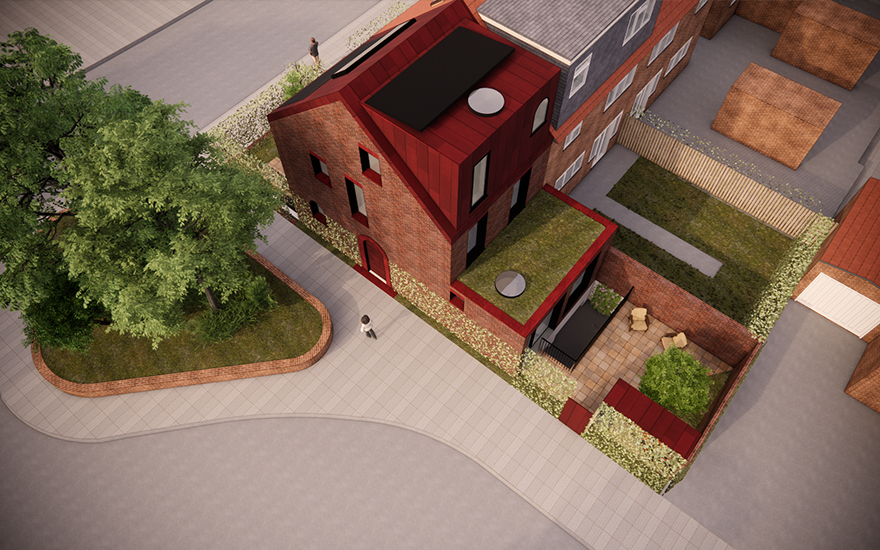
Section 2: Key Considerations for Backland Development
2.1 Location, Access, and Local Policy
Location plays a pivotal role in backland development. Direct access to the road is essential, which can be achieved through boundary fences, alleyways, or access roads. Ideally, owning the access to your site simplifies the planning application process. Understanding your local authority’s regulations and policies regarding backland developments is crucial for securing planning permission.
Local policies may emphasise the need for developments to be in harmony with the surrounding area and contribute positively to the neighbourhood’s character. While contemporary design solutions are possible, the distinctiveness of the local area must be considered and addressed in the proposed design.
2.2 Access and Neighbour Considerations
Access to the site is not only important for future residents but also for emergency services, pedestrians, cyclists, and cars. The increase in population density resulting from backland developments can raise concerns about traffic and parking among neighbours. Mitigating these concerns through well-designed access and parking solutions is essential.
Neighbouring properties are also crucial considerations, particularly in terms of privacy, overshadowing, and daylight. Design and Access Statements should address these factors from the outset, ensuring the proposed development respects the privacy and outlook of adjacent properties.
2.3 Ecological Impact and Waste Management
The impact on trees, plants, and wildlife is a significant aspect of backland development. Existing vegetation contributes to the streetscape and might be protected, making it crucial to consider the preservation of these natural elements. Commissioning an ecological survey to assess the potential impact on protected species is necessary.
Furthermore, waste management and adequate provision for drainage and sewerage are essential considerations. Connection to the local drainage and sewer system, as well as proper waste disposal solutions, must be included in the planning application.
2.4 Design and Local Politics
Design is a critical factor in securing planning permission for backland development. Achieving a balance between designs that are in keeping with the local surroundings and those that offer a contrast is a delicate process. Researching similar case studies in the area can help guide the design concept.
Navigating local politics and gaining support from neighbours is vital for the success of any backland development project. Maintaining open communication with neighbours from the beginning, addressing their concerns, and involving them in the process can turn potential opponents into allies.
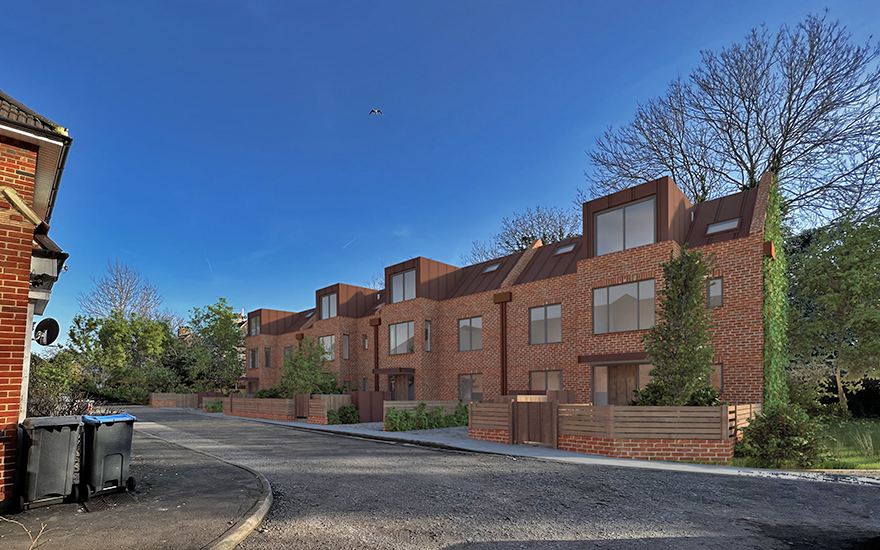
Section 3: Case Study: Overcoming Opposition
At RISE Design Studio, we encountered significant opposition during a recent backland development project in Brent. The proposal involved four new mews houses, which initially received 16 planning objections. However, by carefully addressing each concern through a comprehensive Design and Access Statement, we were able to secure planning permission.
Our approach focused on designing contemporary mews houses that complemented the local character while providing a unique addition to the streetscape. Thoroughly covering all aspects in our initial application and responding to objections with clarity and evidence played a significant role in overcoming opposition.
Frequently Asked Questions
Q1: What is backland development?
A1: Backland development refers to the construction of buildings on land that may not be visible from main roadways, typically located behind existing houses or in small plots between gardens.
Q2: Can I build a separate house in my garden?
A2: The possibility of building a separate house in your garden depends on various factors, including local planning policies, site characteristics, and design considerations. It is essential to conduct thorough research, engage with professionals, and consult with your local authority to determine the feasibility of such a development.
Q3: What are the main considerations for backland development?
A3: Backland development requires careful consideration of factors such as location, access, neighbour concerns, ecological impact, waste management, and design. Understanding and addressing these considerations in a comprehensive manner are vital to obtaining planning permission.
Q4: How can I address neighbour concerns in backland development?
A4: Neighbour concerns can be addressed by involving them from the outset, maintaining open communication, and addressing privacy, overshadowing, and outlook issues in the design. Being respectful of their needs and incorporating their feedback where possible can help alleviate concerns and gain their support.
Q5: What role does sustainable design play in backland development?
A5: Sustainable design is essential in backland development to minimise energy consumption, reduce embodied carbon, and contribute to a greener future. Implementing low-energy design principles, incorporating renewable technologies, and preserving existing vegetation are some of the ways to prioritise sustainability in backland projects.
Q6: How can I navigate local politics during the planning process?
A6: Navigating local politics requires proactive engagement with neighbours and local authorities. Involving neighbours from the beginning, addressing their concerns, and providing clear and evidence-based responses to objections can help build positive relationships. Collaborating with professionals experienced in local planning processes can also provide valuable guidance.
Q7: What are the common design typologies for backland development?
A7: Backland development can employ various design typologies, including mimicking the style of surrounding properties, creating mews-style developments, or embracing contemporary designs that complement the existing streetscape. The choice of design typology should consider local policies, neighbourhood character, and the desire for a distinctive yet harmonious development.
Remember, each backland development project is unique, and it is crucial to seek professional advice tailored to your specific circumstances and local regulations.
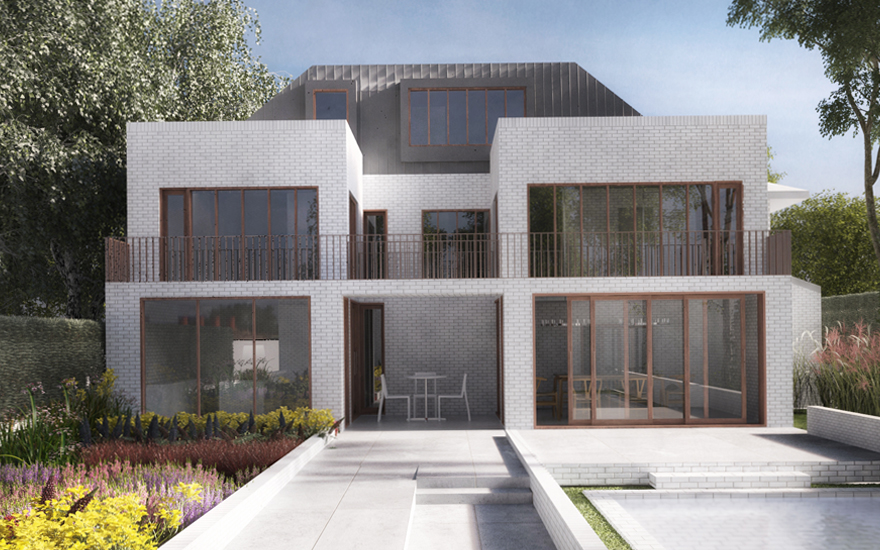
Conclusion
Backland development presents an opportunity to unlock the potential of your garden and contribute to the increasing demand for low-energy, low-carbon housing solutions. By understanding the key considerations, addressing planning policies, and engaging with neighbours and local authorities, you can navigate the complexities of obtaining planning permission. As an architect practice with a focus on contemporary design and sustainability, we encourage you to embrace the challenge and embark on a backland development journey that aligns with your vision and contributes positively to the built environment.
Discover the benefits of partnering with RISE Design Studio for your backland development project. Throughout the years, garden plots have consistently offered abundant opportunities for development, whether situated at the rear, side, or occasionally the front of a property. However, the utilisation of these spaces has been influenced by evolving planning policies.
While obtaining planning permission for backland developments is feasible, leveraging our extensive experience and expertise will greatly enhance your chances of success. Our track record includes a diverse range of projects, ranging from simple extensions, as illustrated above, to ambitious multi-unit proposals.
Irrespective of the scale of your undertaking, we are dedicated to collaborating with you to ensure the viability of your backland or infill development.
If you would like to talk through your project with the team, please do get in touch at mail@risedesignstudio.co.uk or give us a call on 020 3290 1003
RISE Design Studio Architects company reg no: 08129708 VAT no: GB158316403 © RISE Design Studio. Trading since 2011.


